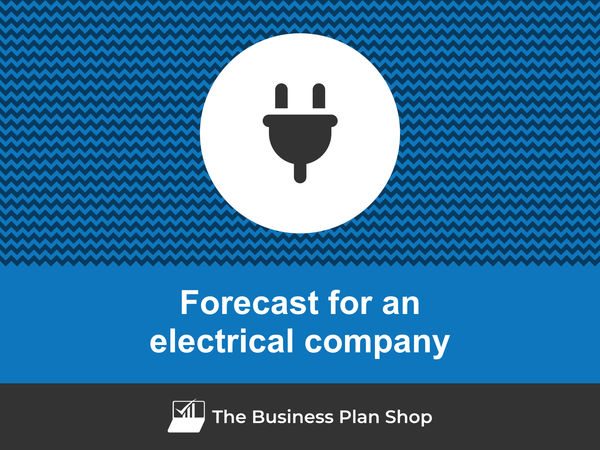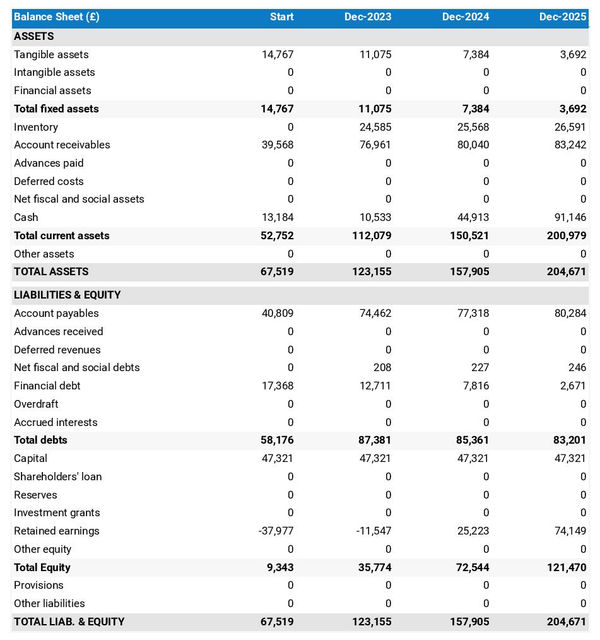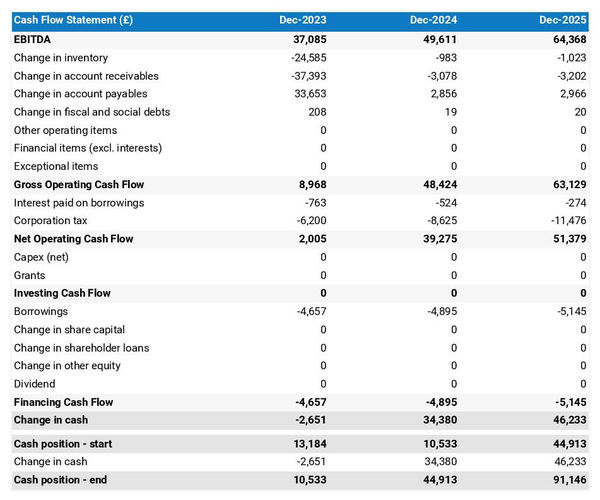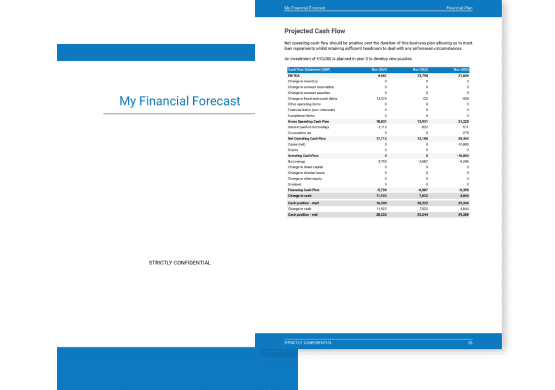How to create a financial forecast for an electrical company?

Developing and maintaining an up-to-date financial forecast for your electrical company is key in order to maintain visibility on your business’s future cash flows.
If you feel overwhelmed at the thought of putting together an electrical company financial forecast then don’t worry as this guide is here to help you.
We'll cover everything from: the main objectives of a financial forecast, the data you need to gather before starting, to the tables that compose it, and the tools that will help you create and maintain your forecast efficiently.
Let's get started!
Why create and maintain a financial forecast for an electrical company?
The financial projections for your electrical company act as a financial blueprint to guide its growth with confidence and ensure its long-term financial viability.
To create them, you will need to look at your business in detail - from sales to operating costs and investments - to assess how much profit it can generate in the years to come and what will be the associated cash flows.
During challenging market conditions, maintaining an up-to-date financial forecast enables early detection of potential financial shortfalls, allowing for timely adjustments or securing financing before facing a cash crisis.
Your electrical company's financial forecast will also prove invaluable when seeking financing. Banks and investors will undoubtedly request a thorough examination of your financial figures, making precision and presentation essential.
Need a solid financial forecast?
The Business Plan Shop does the maths for you. Simply enter your revenues, costs and investments. Click save and our online tool builds a three-way forecast for you instantly.

What information is used as input to build an electrical company financial forecast?
A electrical company's financial forecast needs to be built on the right foundation: your assumptions.
The data required to create your assumptions will depend on whether you are a new or existing electrical company.
If you are creating (or updating) the forecast of an existing electrical company, then your main inputs will be historical accounting data and operating metrics, and your team’s view on what to expect for the next three to five years.
If you are building financial projections for a new electrical company startup, you will need to rely on market research to form your go-to-market strategy and derive your sales forecast.
For a new venture, you will also need an itemised list of resources needed for the electrical company to operate, along with a list of equipment required to launch the venture (more on that below).
Now that you understand what is needed, let’s have a look at what elements will make up your electrical company's financial forecast.
The sales forecast for an electrical company
From experience, it is usually best to start creating your electrical company financial forecast by your sales forecast.
To create an accurate sales forecast for your electrical company, you will have to rely on the data collected in your market research, or if you're running an existing electrical company, the historical data of the business, to estimate two key variables:
- The average price
- The number of monthly transactions
To get there, you will need to consider the following factors:
- Economic conditions: Changes in the economy, such as a recession or economic growth, can have a significant impact on the average price of your electrical services. During a recession, customers may be more price-sensitive and therefore, you may need to lower your prices to remain competitive. On the other hand, during economic growth, you may be able to charge higher prices as customers have more disposable income.
- Technology advancements: Advancements in technology can also affect your average price and number of monthly transactions. For example, if new and more efficient technology is introduced, you may be able to offer your services at a lower price, attracting more customers. Similarly, if your competitors are using advanced technology, you may need to lower your prices to remain competitive.
- Seasonal demand: The demand for electrical services can vary depending on the season. For instance, during the colder months, there may be a higher demand for electrical services related to heating systems. As a result, you may be able to charge higher prices during these months. On the other hand, during the warmer months, the demand for electrical services may decrease, leading to a decrease in your average price.
- Weather conditions: Extreme weather conditions, such as hurricanes, storms, or heatwaves, can also affect your average price and number of monthly transactions. In the event of a natural disaster, there may be a higher demand for electrical services, resulting in an increase in your average price. However, if the weather conditions are severe and disrupt business operations, it may lead to a decrease in your monthly transactions.
- Changes in regulations: Changes in regulations, particularly those related to safety and environmental standards, can also impact your average price and number of monthly transactions. For instance, if new regulations require you to use more expensive materials or equipment, you may need to adjust your prices to cover the additional costs. This can also affect your number of monthly transactions if customers are not willing to pay the higher prices.
Once you have an idea of what your future sales will look like, it will be time to work on your overhead budget. Let’s see what this entails.
Need inspiration for your business plan?
The Business Plan Shop has dozens of business plan templates that you can use to get a clear idea of what a complete business plan looks like.

The operating expenses for an electrical company
Once you know what level of sales you can expect, you can start budgeting the expenses required to operate your electrical company on a daily basis.
Expenses normally vary based on how much revenue you anticipate (which is why, from experience, it is always better to start your forecast with the topline projection), and where your business is based.
Operating expenses for an electrical company will include some of the following items:
- Staff costs: This includes salaries, benefits, and training expenses for your team of electricians, technicians, and administrative staff.
- Accountancy fees: As an electrical company, you will need to hire an accountant to manage your finances and ensure compliance with tax laws.
- Insurance costs: It is important to protect your business and assets with insurance policies such as liability insurance, workers' compensation, and business property insurance.
- Software licenses: To streamline your operations and improve efficiency, you may need to invest in software licenses for project management, accounting, and other business functions.
- Banking fees: You may be charged fees for processing transactions, maintaining a business bank account, and using other banking services.
- Vehicle expenses: If your company owns vehicles for transportation of equipment and materials, you will need to cover expenses such as fuel, maintenance, and insurance.
- Equipment rental: Instead of purchasing expensive equipment, you may choose to rent it for specific projects. This will incur rental fees.
- Office supplies: You will need to purchase supplies such as stationery, printer ink, and other office essentials to keep your business running smoothly.
- Marketing and advertising: To attract new clients and promote your services, you may need to invest in marketing and advertising efforts such as creating a website, printing brochures, and running ads.
- Professional fees: You may need to hire consultants, lawyers, or other professionals for specific projects or legal advice.
- Rent or mortgage: If you operate your business from a physical location, you will need to cover rent or mortgage payments for your office space.
- Utilities: This includes expenses such as electricity, water, and internet services for your office space.
- Travel expenses: If your business requires you to travel for client meetings or project sites, you will need to cover expenses such as airfare, lodging, and meals.
- Training and development: In order to stay updated with industry trends and advancements, you may need to invest in training and development programs for yourself and your team.
- Taxes: As a business owner, you will need to pay various taxes such as income tax, property tax, and sales tax.
This list will need to be tailored to the specificities of your electrical company, but should offer a good starting point for your budget.
What investments are needed to start or grow an electrical company?
Once you have an idea of how much sales you could achieve and what it will cost to run your electrical company, it is time to look into the equipment required to launch or expand the activity.
For an electrical company, capital expenditures and initial working capital items could include:
- Electrical Equipment: This includes items such as generators, transformers, and switchgear, which are necessary for the operation of an electrical company and can be considered fixed assets.
- Vehicles: An electrical company may need to purchase vehicles for transportation of equipment and employees to job sites. These vehicles can also be considered fixed assets.
- Tools and Machinery: To effectively provide electrical services, an electrical company may need to invest in tools and machinery such as drills, saws, and other specialized equipment. These items are essential for the company's operations and are considered fixed assets.
- Office and Warehouse Space: An electrical company may need to purchase or lease office and warehouse space to store equipment and conduct administrative tasks. These spaces are considered fixed assets and are necessary for the company's operations.
- Technology and Software: To stay competitive and efficient, an electrical company may need to invest in technology and software such as accounting and project management systems. These items are considered fixed assets and are crucial for the company's success.
Again, this list will need to be adjusted according to the specificities of your electrical company.
Need a convincing business plan?
The Business Plan Shop makes it easy to create a financial forecast to assess the potential profitability of your projects, and write a business plan that’ll wow investors.

The financing plan of your electrical company
The next step in the creation of your financial forecast for your electrical company is to think about how you might finance your business.
You will have to assess how much capital will come from shareholders (equity) and how much can be secured through banks.
Bank loans will have to be modelled so that you can separate the interest expenses from the repayments of principal, and include all this data in your forecast.
Issuing share capital and obtaining a bank loan are two of the most common ways that entrepreneurs finance their businesses.
What tables compose the financial plan for an electrical company?
Now let's have a look at the main output tables of your electrical company's financial forecast.
The profit & loss forecast
The forecasted profit & loss statement will enable you to visualise your electrical company's expected growth and profitability over the next three to five years.

A financially viable P&L statement for an electrical company should normally show:
- Sales growing above inflation
- Stable or expanding (ideally) profit margins
- A net profit
This will of course depend on the stage of your business: a new venture might be loss-making until it reaches its breakeven point in year 2 or 3, for example.
The projected balance sheet
Your electrical company's forecasted balance sheet enables you to assess your financial structure and working capital requirements.
It is composed of three types of elements: assets, liabilities and equity:
- Assets: represent what the business owns and uses to produce cash flows. It includes resources such as cash, equipment, and accounts receivable (money owed by clients).
- Liabilities: represent funds advanced to the business by lenders and other creditors. It includes items such as accounts payable (money owed to suppliers), taxes due and loans.
- Equity: is the combination of what has been invested by the business owners and the cumulative profits and losses generated by the business to date (which are called retained earnings). Equity is a proxy for the value of the owner's stake in the business.

The projected cash flow statement
A projected cash flow statement for an electrical company is used to show how much cash the business is generating or consuming.

The cash flow forecast is usually organised by nature to show three key metrics:
- The operating cash flow: do the core business activities generate or consume cash?
- The investing cash flow: how much is the business investing in long-term assets (this is usually compared to the level of fixed assets on the balance sheet to assess whether the business is regularly maintaining and renewing its equipment)?
- The financing cash flow: is the business raising new financing or repaying financiers (debt repayment, dividends)?
Cash is king and keeping an eye on future cash flows is imperative for running a successful business. Therefore, you should pay close attention to your electrical company's cash flow forecast.
If you are trying to secure financing, note that it is customary to provide both yearly and monthly cash flow forecasts in a financial plan - so that the reader can analyze seasonal variation and ensure the electrical company is appropriately capitalised.
Need a solid financial forecast?
The Business Plan Shop does the maths for you. Simply enter your revenues, costs and investments. Click save and our online tool builds a three-way forecast for you instantly.

Which tool should you use to create your electrical company's financial forecast?
Creating your electrical company's financial forecast may sound fairly daunting, but the good news is that there are several ways to go about it.
Using online financial projection software to build your electrical company's forecast
The modern and easiest way to build a forecast is to use professional financial projection software such as the one we offer at The Business Plan Shop.
There are several advantages to using specialised software:
- You can easily create your financial forecast by letting the software take care of the financial calculations for you without errors
- You have access to complete financial forecast templates
- You get a complete financial forecast ready to be sent to your bank or investors
- You can easily track your actual financial performance against your financial forecast, and recalibrate your forecast as the year goes by
- You can create scenarios to stress test your forecast's main assumptions
- You can easily update your forecast as time goes by to maintain visibility on future cash flows
- You have a friendly support team on standby to assist you when you are stuck
- It’s cost-efficient and much cheaper than using an accountant or consultant (see below)
If you are interested in this type of solution, you can try our forecasting software for free by signing up here.
Calling in a financial consultant or chartered accountant
Enlisting the help of a consultant or accountant is also a good way to obtain a professional electrical company financial forecast.
The downside of this solution is its cost. From experience, obtaining a simple financial forecast over three years (including a balance sheet, income statement, and cash flow statement) is likely to cost a minimum of £700 or $1,000.
The indicative cost above, is for a small business, and a forecast is done as a one-shot exercise. Using a consultant or accountant to track your actuals vs. forecast and to keep your financial projections up to date on a monthly or quarterly basis will cost a lot more.
If you opt for this solution, make sure your accountant has in-depth knowledge of your industry, so that they may challenge your figures and offer insights (as opposed to just taking your assumptions at face value to create the forecast).
Why not use a spreadsheet such as Excel or Google Sheets to build your electrical company's financial forecast?
You and your financial partners need numbers you can trust. Unless you have studied finance or accounting, creating a trustworthy and error-free electrical company financial forecast on a spreadsheet is likely to prove challenging.
Financial modelling is very technical by nature and requires a solid grasp of accounting principles to be done without errors. This means that using spreadsheet software like Excel or Google Sheets to create accurate financial forecasts is out of reach for most business owners.
Creating forecasts in Excel is also inefficient nowadays:
- Software has advanced to the point where forecasting can be done much faster and more accurately than manually on a spreadsheet.
- With artificial intelligence, the software is capable of detecting mistakes and helping decision-making.
Spreadsheets are versatile tools but they are not tailor-made for reporting. Importing your electrical company's accounting data in Excel to track actual vs. forecast is incredibly manual and tedious (and so is keeping forecasts up to date). It is much faster to use dedicated financial planning tools like The Business Plan Shop which are built specially for this.
Need a convincing business plan?
The Business Plan Shop makes it easy to create a financial forecast to assess the potential profitability of your projects, and write a business plan that’ll wow investors.

Use our financial projection templates for inspiration
The Business Plan Shop has dozens of financial forecasting templates available.
Our examples contain both the financial forecast, and a written business plan which presents, in detail, the company, the team, the strategy, and the medium-term objectives.
Whether you are just starting out or already have your own electrical company, looking at our template is always a good way to get ideas on how to model financial items and what to write when creating a business plan to secure funding.

Takeaways
- A financial projection shows expected growth, profitability, and cash generation for your business over the next three to five years.
- Tracking actuals vs. forecast and keeping your financial forecast up-to-date is the only way to maintain visibility on future cash flows.
- Using financial forecasting software makes it easy to create and maintain up-to-date projections for your electrical company.
You have reached the end of our guide. We hope you now have a better understanding of how to create a financial forecast for an electrical company. Don't hesitate to contact our team if you have any questions or want to share your experience building forecasts!
Need inspiration for your business plan?
The Business Plan Shop has dozens of business plan templates that you can use to get a clear idea of what a complete business plan looks like.

Also on The Business Plan Shop
Know someone who runs or wants to start an electrical company? Share our financial projection guide with them!






